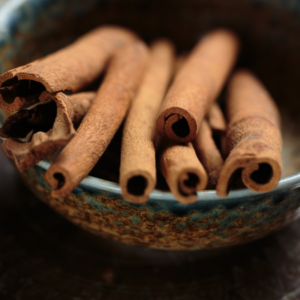Cinnamon: The Spice That Conquered the World
From Antiquity to Modern Kitchens - An Aromatic Journey
Cinnamon: The Spice of Ages
Cinnamon, one of the world’s oldest and most beloved spices, has woven its way through the fabric of human history, both as a culinary delight and a medicinal marvel.
This aromatic spice, derived from the inner bark of Cinnamomum trees, carries with it a rich tapestry of stories, spanning continents and cultures, and has been a symbol of warmth, sweetness, and profound depth in dishes across the globe.
As we embark on a journey through the world of cinnamon, we uncover its origins, its rise to global prominence, and the myriad ways it continues to enchant our palates and nourish our bodies.

Origins and Historical Significance
Cinnamon’s story begins in the ancient rainforests of Sri Lanka (formerly Ceylon), where it was first discovered and later spread through the Middle East and Europe via the intricate trade routes of the ancient world.
Esteemed by ancient Egyptians for its preservative qualities in the embalming process, and cherished by medieval Europeans for its rarity and value, cinnamon has always been much more than a mere spice.
It was a symbol of status, a commodity for trade, and a subject of lore and legend.
Culinary Uses Across Cultures
In the culinary realm, cinnamon’s versatility is unmatched. Its warm, sweet, and slightly spicy flavor profile makes it a favorite in a vast array of dishes.
From the cinnamon-infused milk teas of India to the rich, savory stews of Moroccan cuisine, and the sweet, comforting pies of American and European bakeries, cinnamon bridges the gap between cultures, enhancing both sweet and savory dishes with its distinctive flavor.
Health Benefits and Nutritional Value
Beyond its culinary uses, cinnamon is prized for its health benefits.
Rich in antioxidants, it has been used in traditional medicine for thousands of years to treat a variety of ailments, from colds and coughs to inflammation and heart disease.
Modern science has begun to uncover the truth behind these ancient remedies, with studies suggesting that cinnamon can improve digestive health, lower blood sugar levels, and reduce the risk of heart disease.
Sustainable Production and Trade
As the demand for cinnamon has grown, so too has the importance of sustainable cultivation and fair trade practices.
The spice’s production, primarily in countries like Sri Lanka, Indonesia, China, and Vietnam, provides a livelihood for thousands of farmers.
Efforts to ensure fair compensation and sustainable farming practices are crucial in preserving this ancient spice trade for future generations.
The Art of Cooking with Cinnamon
Cooking with cinnamon invites a world of creativity and exploration. It is as much at home in a savory lamb tagine as it is in a sweet, sticky cinnamon roll.
The key to unlocking its full potential lies in understanding the spice’s characteristics and how it interacts with other ingredients.
Whether used in a delicate sprinkle or a bold infusion, cinnamon has the power to transform a dish, adding layers of flavor and aroma that tantalize the senses.
Cinnamon in Modern Cuisine and Beyond
Today, cinnamon continues to inspire chefs, home cooks, and food enthusiasts around the world. Its presence in modern cuisine is a testament to its timeless appeal and enduring versatility.
From gourmet dishes to everyday meals, cinnamon adds a touch of magic, reminding us of the spice’s journey through history and its place in the hearts and kitchens of cultures around the globe.
The Cultural Significance of Cinnamon
Cinnamon’s influence extends beyond the kitchen. In many cultures, it holds a place in traditional ceremonies and rituals, symbolizing prosperity, health, and protection. In some traditions, cinnamon sticks are used as incense or burned to purify the home and attract positive energy.
Its universal appeal and sacred status in various cultures underscore the spice’s deep-rooted significance in human heritage.
The Future of Cinnamon
As we look to the future, the role of cinnamon is set to evolve further.
With a growing interest in natural and holistic approaches to health, cinnamon’s medicinal properties are gaining more recognition.
Additionally, as culinary trends continue to embrace global flavors, cinnamon’s popularity is likely to soar, finding its way into innovative dishes and products.
The ongoing exploration of sustainable and ethical sourcing will also play a critical role in shaping the cinnamon trade, ensuring that this ancient spice continues to be enjoyed for generations to come.
Conclusion
Cinnamon, with its rich history, health benefits, culinary versatility, and cultural significance, stands as a testament to the enduring connection between food and culture.
As we savor its sweet and spicy notes, we partake in a tradition that spans millennia, a shared human heritage that continues to evolve and enrich our lives.
In the world of spices, cinnamon is indeed a treasure, a simple yet profound ingredient that has the power to bring the world to our table, one dish at a time.